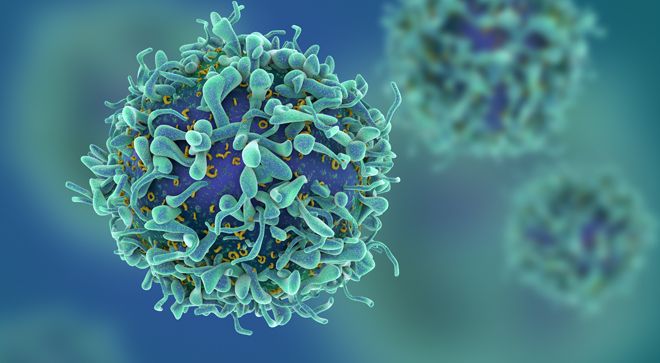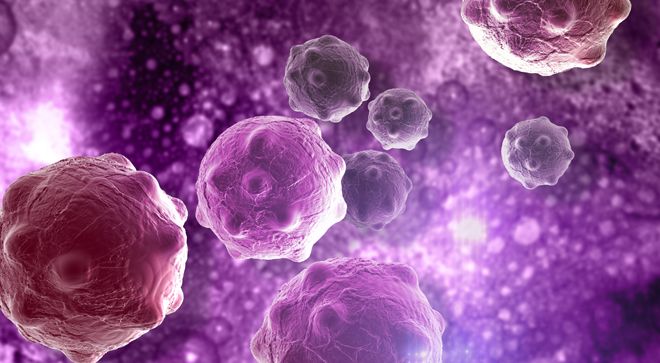Article
Gazyva with Chemotherapy May Eliminate Disease in Bone Marrow Before Transplantation in Mantle Cell Lymphoma
Author(s):
This treatment, which included dexamethasone, high-dose cytarabine and cisplatin, was well tolerated in this patient population, although longer-term follow-up is needed to see if the benefit persists.
A treatment regimen with Gazyva (obinutuzumab) plus dexamethasone, high-dose cytarabine and cisplatin was well tolerated in patients with mantle cell lymphoma who were eligible for bone marrow transplantation, according to study results published in Lancet Haematology.
This regimen contributed to activity that induced minimal residual disease negativity in bone marrow, which is the absence of disease after treatment.
“The LyMa-101 trial achieved its primary endpoint and showed the potential activity of obinutuzumab plus [dexamethasone, high-dose cytarabine and cisplatin] as induction chemotherapy, with bone marrow minimal residual disease negativity potentially predicting long-term disease control,” the study authors wrote. “Longer follow-up is needed to investigate the minimal residual disease-based obinutuzumab on-demand strategy after maintenance.”
In this phase 2 trial, study authors assessed data from 86 untreated patients (median age, 58 years; 73% men) ages 18 to 66 years with newly diagnosed mantle cell lymphoma who were eligible for autologous stem cell transplantation, or bone marrow transplantation.
All patients underwent four treatment phases: induction, consolidation, maintenance and post-maintenance. During the induction phase, patients received four cycles of Gazyva plus dexamethasone, high-dose cytarabine and cisplatin before undergoing autologous stem cell consolidation. Upon completion, patients underwent maintenance with Gazyva for three years. Those considered minimal residual disease-positive underwent a post-maintenance phase of on-demand Gazyva for patients.
The primary end point of this trial was minimal residual disease negativity after completion of the induction phase, which was measured within bone marrow. Study authors considered Gazyva an effective treatment if bone marrow minimal residual negative was 70% or more, and ineffective if this level was 55% or less.
Throughout this trial, 95% of patients completed the induction phase, 86% underwent autologous stem cell transplantation and 81% of patients started the maintenance phase. Of the 73 patients within the efficacy set, which was the group of patients with measured minimal residual disease, 55% achieved minimal residual disease negativity within bone marrow after completion of the induction phase. In addition, 25% of patients were minimal residual disease-positive, or had detectable disease after treatment. Of these patients who were minimal residual disease positive, 12 patients tested positive in bone marrow, two patients had disease progression and four patients did not undergo minimal residual disease assessment.
The most common severe to life-threatening adverse events related to the treatment were anemia, or a lack of healthy red blood cells, and neutropenia, or a low number of white blood cells known as neutrophils. During the induction phase, study authors observed 58 serious adverse events such as renal failure, infection and gastrointestinal disorders. Although 4% of patients died during the study, none were related to treatment with Gazyva.
“Emergence of novel targeted therapies has modified treatment strategies in patients with relapsed or refractory mantle cell lymphoma,” the study authors wrote. “The chemotherapy-first dogma in mantle cell lymphoma might soon be replaced with a chemotherapy-free first regimen, although long-term follow-up with respect to both safety and efficacy will be necessary.”
For more news on cancer updates, research and education, don’t forget to subscribe to CURE®’s newsletters here.




